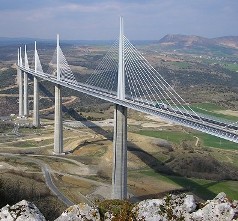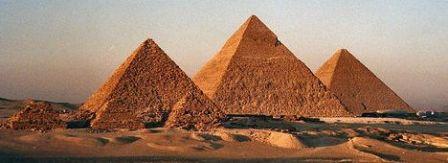Top 10 most impressive engineering projects
Every few decades, there has been an engineering feat that has made us truly believe in the power of human ingenuity in sparking social change and bettering the lives of people. Behind these achievements, there have been numerous remarkable engineers who dedicated their lives to creating these inventions.
The following engineering projects qualify as some of the most remarkable, because many of them achieved what was at one point deemed to be impossible and fulfilled the needs of modern day life by implementing audacious approaches to solving complex challenges. This article is a celebration of all those engineers who played the crucial roles in creating these amazing engineering feats.
10. Moon Landing
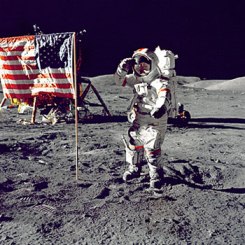
1969 Apollo Moon Landing
Neil Amstrong’s famous 1969 moon landing was surely “a giant leap for mankind,” forever changing how we approach what other consider hard and the impossible. The Apollo 11 mission placed two astronauts (Neil Armstrong and Buzz Aldrin) onto the surface of the moon, successfully defeating Russia in the rush to the skies. This event marked a definitive point in the 20th Century and at the time helped cement the United States above Russia as the ‘greatest superpower’ whilst firing the imagination of generations of children.
9. Panama Canal
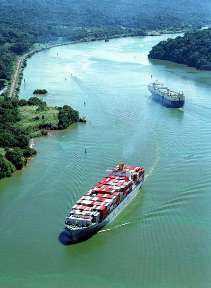
Panama Canal
Before the Panama Canal was opened on Aug. 15, 1914, a ship traveling from New York and San Francisco would have had to sail around Cape Horn, a 67-day, 12,000-mile journey. The Panama Canal provided shortcut between the Atlantic and Pacific Oceans, reducing the same New York to San Francisco by 4,000 miles. Clearly, much the same way the Transcontinental Railroad reinvented shipping, the Panama Canal was a colossal engineering project which greatly impacted shipping between the two oceans by reducing the journey times immensely.
8. Burj Dubai
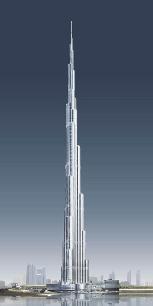
Burj Khalifa
The Burj Dubai, which was christened Burj Khalifa at its Jan. 4, 2010 opening, achieved instant engineering marvel status before it even opened. This is not because it was long projected to achieve the world tallest building status upon completion, but because the height proposed has never before been attempted, and especially not in the type of environment it now sits on. The construction of Burj Dubai therefore necessitated the the building be designed to withstand the tough and windy terrain, plus the projected human demands on the building.
The design of the structure is just as impressive as the height, having many of the building’s sub-systems being record breakers themselves, such as the observatory lifts breaking the record for the longest travel distance between lowest and highest stop. The Burj Dubai towers above the surrounding landscape at a huge 818meters tall and has been built as a centerpiece of an urban development that will include homes, hotels and parkland.
The 160-plus-story Burj Dubai Tower is the centerpiece of a $20 billion multi-tower development located just outside of downtown Dubai. The Burj Dubai project consists of the tower itself, as well as an adjacent podium structure, and separate six-story office annex and two-story pool annex. The 3 million-square-foot reinforced concrete multi-use tower is predominantly residential and office space.
7. Millau Viaduct
The Millau Viaduct is presently the tallest vehicular cable-stayed road-bridge that spans the valley of the river Tarn near Millau in southern France. The height of the bridge is an impressive 1,125 feet, 62 feet taller than the Eiffel Tower. The bridge was opened in December 2004 and crosses the Valley of the River Tarn close to Millau in the South of France.
The bridge was designed by Michel Virlogeux, a structural engineer. The project’s architect was Norman Foster, who was quoted as saying that the bridge looked “impossibly delicate” and was a “dialogue between nature and the man made.” Delicate it is, because driving atop this engineering feat makes one feel as though they are suspended in the sky. Rightfully so because the Millau Viaduct bridge deck is the highest in the world.
See a video on the construction of the Millau Viaduct.
6. The Channel Tunnel
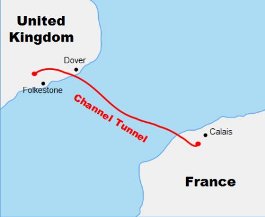
The Channel Tunnel
The Channel Tunnel is the longest tunnel with an undersea section in the world. The length of the Channel Tunnel is 32.4 miles and links Folkestone, England to Coquelles, France. The tunnel itself was bored through a chalk marl stratum which was deemed a good material for tunneling as it is both strong and easy to excavate. The actual tunnel consists of three separate tunnels connected together by cross-passage links. Construction of the tunnel began in 1988 and opened in 1994 and has been rated as one of the Seven Wonders of the Modern World by the American Society of Civil Engineers.
5. The Hoover Dam
The Hoover Dam
When I first visited The Hoover Dam in my early twenties, fresh out of college and full of the curiosity of a new engineer, I never would have imagined the impact the grandeur of this monument would have on my professional life. This is not because at the time, Hoover Dam was the most impressive structure I had ever been on, but rather it is the story of how the structure came into existence and how it conquered once thought to be impossible obstacles.
To create the Hoover Dam the contractors had to divert the flow of the mighty Colorado River through tunnels dug inside the canyon walls. The tunnels were 56 feet in diameter with a combined length was nearly 16,000 feet. Following the diversion, engineers had to construct a structure tall and strong enough to sustain future generations and keep the Colorado river under control. As shown in the video, the construction of the Hoover Dam necessitated the use of previously unused design practices.
When the Hoover Dam was completed in 1935, it was the world’s largest concrete structure and the largest electric producing facility. Years later as I stood 736 feet above the river bed, I felt the power of the structure. What inspired me at that instant was the humbling realization that at one point, this structure was just an idea.
Video – The story of the Hoover Dam
4. Boston Big Dig

Memorial Bridge, Interstate Highway I-93
Recognized as the largest, most complex, and technologically challenging highway project in the history of the United States, the Central Artery/Tunnel Project significantly reduced traffic congestion and improved mobility in one of America’s oldest and most congested major cities. In addition, it helped improve the environment, and established the groundwork for continued economic growth for Massachusetts and all of New England.
The project, which replaced Boston’s deteriorating six-lane elevated Central Artery (I-93) with an underground highway, two new bridges over the Charles River, extended I-90 to Boston’s Logan International Airport, and Route 1A, created more than 300 acres of open land and reconnected downtown Boston to the waterfront.
3. Transcontinental Railroad
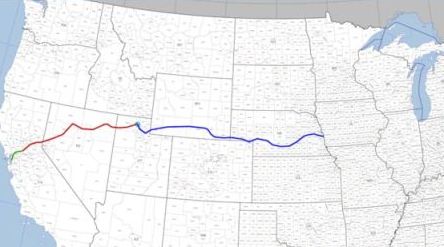
Transcontinental Railroad
By the middle of the 19th century, the benefits brought by the host of advances of the industrial age were gradually beginning to reach America. These advances coupled with the desire to connect East and West prompted the spectacular engineering project that forever changed the continent. Those building the railroad battled against hostile terrain, a civil war and the Wild West. This video provides an interesting narrative on the construction of the Transcontinental Railroad and the social-economic conditions of the time.
2. The Great Wall of China
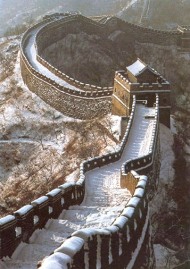
The Great Wall of China
The Great Wall of China is the longest man-made structure in the world at about 4,160 miles long. The wall was constructed between the 5th Century BC and the 16th Century BC. What is most impressive about this structure is the fact that it was accomplished without the use of modern machinery in extremely rough terrain.
1. Pyramids of Giza, Egypt
Rising out of the sand on the outskirts of Cairo are the Pyramids of Giza, ancient monuments that are the last standing of the Seven Wonders of the Ancient World. The ancient necropolis consists of the Pyramid of Khufu, the Pyramid of Khafre, the Pyramid of Menkaure, and the Great Sphinx.
The allure of the pyramids is undeniable, with archaeologists still fascinated by their construction. While some think the stones were dragged from a quarry and somehow lifted into place, others think that the stones were built in place with some kind of limestone concrete. Whatever the mode of construction, this project qualifies as the most impressive given the size and the mystery behind its impeccable construction.
Video – Building the great pyramid
